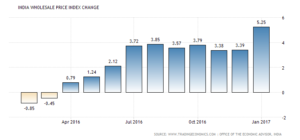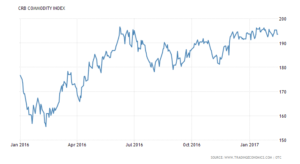David Hume was one of the most prominent of the Scottish Moral Philosophers. He is particularly famous as a philosophical skeptic, who, in his book, An Inquiry Concerning Human Understanding (1748), questioned whether man’s reason and reasoning ability could successfully apprehend reality with any complete degree of certainty. He also argued that reason followed men’s “passions,” rather than reason being a guide for or a check upon men’s emotions and desires.

David Hume
Hume is also famous for arguing that there is a distinct difference between factual or “positive” statements from ethical or “normative” statements. Or expressed differently, an “ought” conclusion could not be self-evidently or logically deduced, per se, from an “is” statement.
He also has been widely recognized as one of the leading contributors to the theory of social ethics and the political order, especially in his work, An Inquiry into the Principles of Morals (1751). Hume also wrote a widely read and acclaimed five-volume History of England (1754-1762), but one which Thomas Jefferson considered unsuitable for students at the University of Virginia due to his belief that Hume was too “Tory” in his interpretation of British history!
Not too surprisingly, for over two hundred and fifty years these ideas of Hume’s have both been highly controversial in philosophy, yet immensely influential across many social and scientific disciplines.
David Hume’s Contributions to Economics Understanding
In addition, and for our purposes in particular, David Hume was an important and distinctly original contributor to economic theory and policy. It was in a collection of Essays, Moral and Political (1753-1754), that he made significant contributions to the emerging subject of “political economy.” It is in these essays that Hume presented a devastating criticism of Mercantilist thinking on trade and commerce, while at the same time, demonstrating the self-regulating and “balancing” forces of the market process.
But where luxury nourishes commerce and industry, the peasants, by a proper cultivation of the land, become rich and independent.
Indeed, it can be argued that if his own writings on various economic themes had been more systematically developed and joined together, it might have been David Hume who became considered the “father” of modern economics instead of Adam Smith.
Hume was born in 1711 in Edinburgh, Scotland and attended the University of Edinburgh, but did not graduate believing that he learned more from reading on his own than from the professors in the university courses. He made his living in various capacities, including for a period of time in France. He returned to his native Scotland in 1769 and lived there until his death in 1776.
Commerce Brings Wealth, Refinement and Freedom
David Hume emphasized that commerce and trade were among the most important avenues to offer opportunities to raise people’s standards of living, and to bring refinement and cultural betterment to a growing portion of a nation’s population.
Commerce also served as an important leveler of the material inequality of a society based on political privilege and government-bestowed monopoly. Through trade, a wider variety and quality of goods became available to a growing number of the people in any society, fostering the development of a “middle class.”
At the same time, growing wealth among more and more members of society acted as a means to restrain and weaken the arbitrary power of tyrannical governments, as a larger percentage of the population had the means to free themselves from government dependency and control. Or as Hume expressed it in his essay, “Of the Refinement in the Arts”:
“But where luxury nourishes commerce and industry, the peasants, by a proper cultivation of the land, become rich and independent; while the tradesmen and merchants acquire a share of the property, and draw authority and consideration to that middling rank of men, who are the best and firmest basis of public liberty.
“These submit not to slavery, like the peasants, from poverty and meanness of spirit; and having no hopes of tyrannizing over others, like the barons, they are not tempted, for the sake of that gratification, to submit to the tyranny of their sovereign. They covet equal laws, which may secure their property, and preserve them from monarchical, as well as aristocratical tyranny.”
Governments and special interest groups, Hume feared, are always want to use and abuse political authority and influence to gain much for themselves at the expense of the ordinary, or common, members of society. And as a society grows in wealth there is more for the government to siphon off through taxes for its own purposes and for interested groups to use the state to plunder and manipulate. But with the emergence of a middle class that is increasingly supporting itself through commerce and industry, they have the financial means to resist these encroachments by the state. Or as Hume said in his essay “Of Commerce”: “So the luxury of the individuals must diminish the force, and check the ambition of the sovereign.”
Money, Prices, and Inflationary Short-Run Impacts on Production
Hume is also recognized as a significant eighteenth century contributor to monetary theory with his formulation of the quantity theory of money In his essay, “Of Money,” he said that money’s role in a market system is to serve as a medium of exchange and a unit of account. Looked at from a “static” equilibrium perspective, the quantity of money in a society is of little or no importance.
As long as prices in a society were sufficiently adjusted to reflect the available quantity of money to facilitate transactions, any quantity of money serves the purposes of exchange. Double the quantity of money in a society or reduce it by half, when all prices will have, respectively, risen proportionally by double their previous the level, or lowered proportionally by half their previous level, respectively, then all produced and marketed goods will “clear” off the market, with no change in the relative values or costs of the goods in terms of each other.
Any influence that money may have on the level of industry, production, or employment is, Hume argued, in the transition period between the injection or withdrawal of any part of the quantity of money in the economy, when some prices may rise or decline before others, thus influencing profit margins and cost relationships. Hume explained the process in the following way:
“If we consider any one kingdom by itself, it is evident, that the greater or less plenty of money is of no consequence . . . It is indeed evident, that money is nothing but the representation of labor and commodities, and serves only as a method of rating and estimating them. Where coin is in greater plenty; as a greater quantity of it is required to represent the same quantity of goods; it can have no effect, either good or bad, taking a nation within itself . . .
“Since the discovery of the [gold and silver] mines in America, industry has increased in all the nations of Europe . . . In every kingdom, into which money begins to flow in greater abundance than formerly, everything takes a new face: labor and industry gain life; the merchant becomes more enterprising, the manufacturer more diligent and skillful, and even the
The post David Hume Believed In The Miracle Of Commerce appeared first on ValueWalk.










































